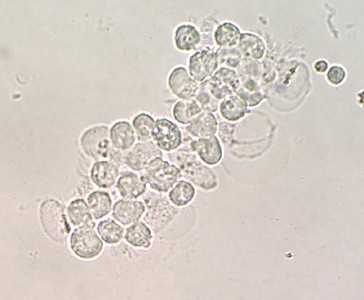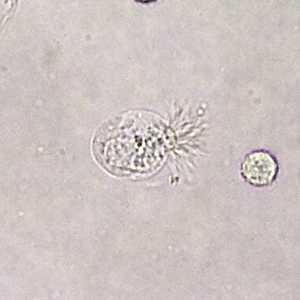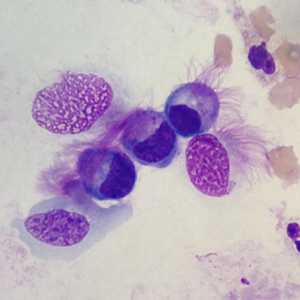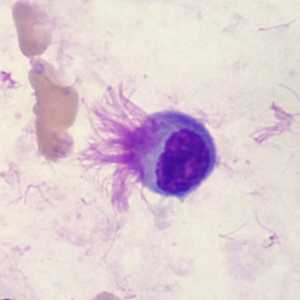
Case #396 - May 2015
A 72-year-old female with a past medical history of congestive heart failure, diabetes, and hypertension was admitted to a local hospital with complaints of progressive shortness of breath. After admission, she became hypoxic and was intubated and placed on mechanical ventilation support. X-rays performed showed pulmonary edema. Bronchial alveolar lavage (BAL) specimens were collected and sent to Microbiology and Hematology for routine work-up. During a cell count, one of the technologists noted what appeared to be motile ciliated or flagellated cells (Figures A and B). An aliquot of the BAL specimen was also stained with hematoxylin-and-eosin (H&E, Figures C and D), in which similar objects were observed. Digital images were taken of the objects of interest and sent to the DPDx Team for diagnostic assistance. What is your diagnosis? Based on what criteria?

Figure A

Figure B

Figure C

Figure D
Case Answer
The objects shown in this case were detached ciliary tufts (remnants of ciliated epithelial cells) and a diagnosis was made of No Parasites Found. This finding is referred to as ciliocytophthoria, and can be observed in a variety of body fluids, including peritoneal, amniotic, and respiratory specimens. These detached cells are commonly mistaken for protozoa such as Trichomonas, Lophomonas, and Balantidium. There are several reports documenting Lophomonas in human clinical specimens, and many of them can be attributed to the misidentification of detached epithelial cells.
More on: Artifacts
This case and images were kindly provided by Sparks Regional Medical Center, Fort Smith, AR.
Images presented in the monthly case studies are from specimens submitted for diagnosis or archiving. On rare occasions, clinical histories given may be partly fictitious.
DPDx is an education resource designed for health professionals and laboratory scientists. For an overview including prevention and control visit www.cdc.gov/parasites/.
- Page last reviewed: August 24, 2016
- Page last updated: August 24, 2016
- Content source:
- Global Health – Division of Parasitic Diseases and Malaria
- Notice: Linking to a non-federal site does not constitute an endorsement by HHS, CDC or any of its employees of the sponsors or the information and products presented on the site.
- Maintained By:


 ShareCompartir
ShareCompartir